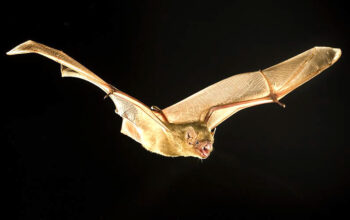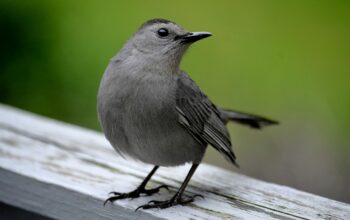Ardea herodias
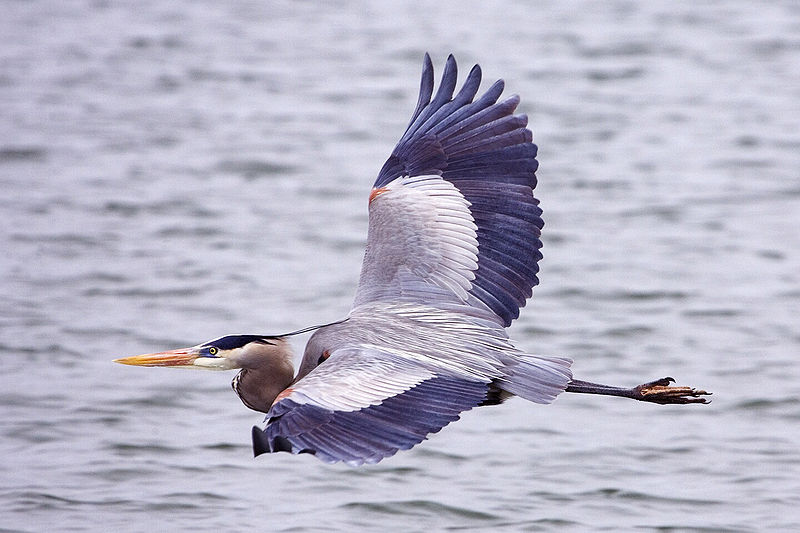
The Great Blue Heron is a large wading bird in the heron family Ardeidae, common over most of North America and Central America, as well as the Caribbean and the Galápagos Islands. The blue heron can adapt to many climates and diets, found near the shores of open water and in wetlands. Birds east of the Rocky Mountains and in the Northern range are migratory – they can be found as far north as Alaska during the summer, and extend down to Mexico and South America during the winter. Birds in southern regions, however, are year-long residents.
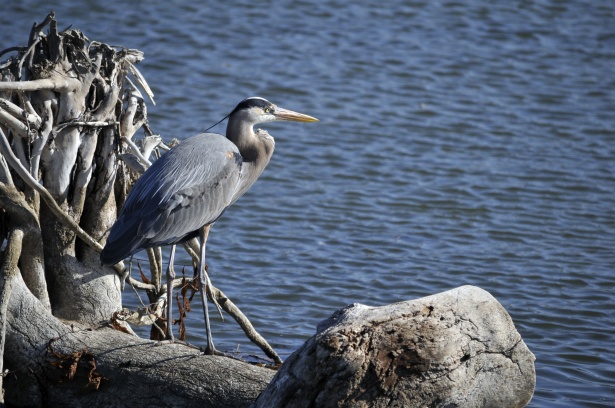
It is the largest North American heron with an average wingspan of 66-79 inches, making it also the third largest of the heron family. The great blue heron stands at an average of 45 -54 inches with long legs and ‘S’ shaped neck, only weighing about 4 to 8 pounds.
More noted than its size are the blue heron’s distinct markings – a red, brown and black body, slate-gray/blue flight feathers, long plumes under the neck and black or slate plumes above the eyes, stark against a white head and rusty-gray neck. During breeding season the blue heron will adorn long plumes on its back, the lore will turn a bright blue, irises will turn reddish, and the yellow bill will take on an orange hue. Most commonly seen slowly stalking through water banks, stretching its long neck out and quickly stabbing prey, swallowing it whole. The heron feeds on small fish, amphibians, reptiles, crustaceans, insects or even birds and mammals. They are surely a sight to see, especially when taking flight with its massive 6 foot wingspan.
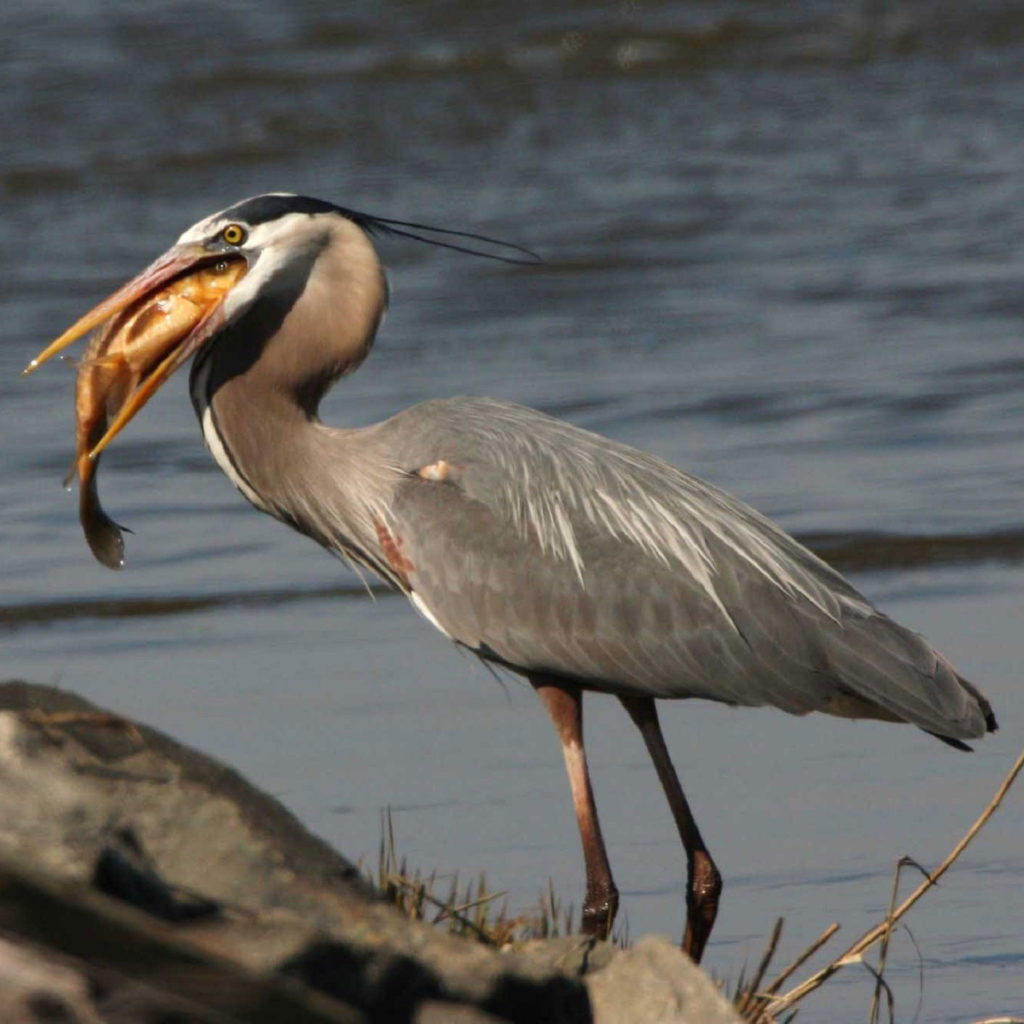
There are many subspecies of the great heron that differ only slightly in plumage and size. Commonly confused with the smaller grey heron or little blue heron, the best distinction between the birds besides size is the great blue heron’s white head. Herons are often mistaken for many other common water bids such as cranes, storks or ibises, which all differ in that they hold their neck straight during flight, while the heron holds their neck tucked in. The white morp native to Florida, called the Great White Heron, is debated to be either a subspecies or an entirely separate species.
Interesting Facts About Herons
The long stringy feathers that grow from the heron’s neck are specially designed to help the bird clean their beak from its fishy prey. The fine powdery feathers continually grow and are worn away by the bird’s grooming.
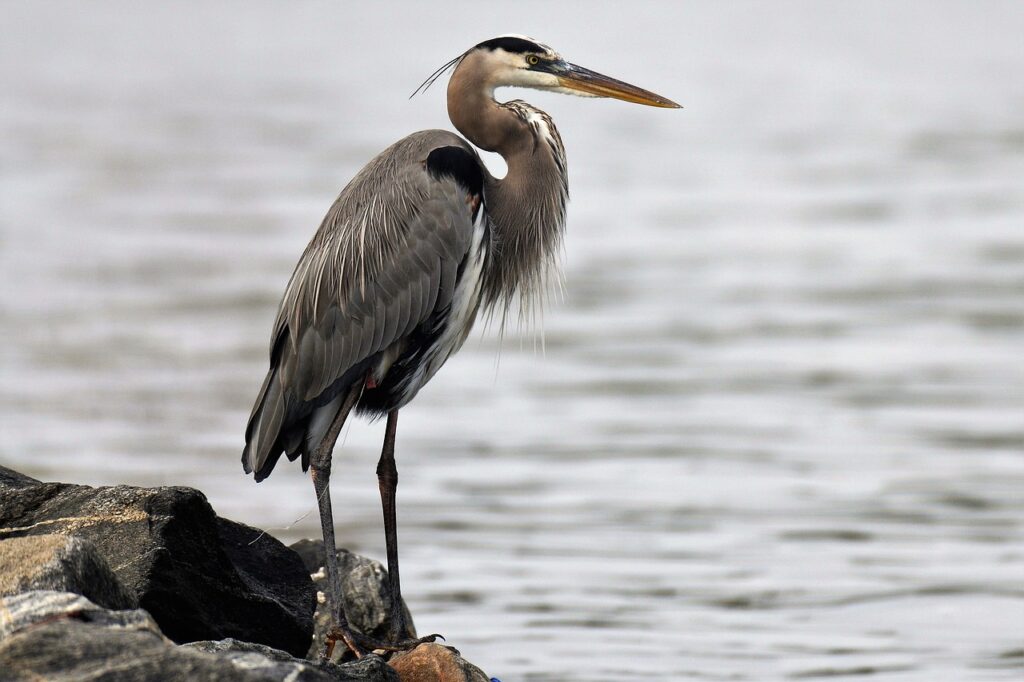
The great blue heron usually breeds in colonies and return back to the same breeding place each year. These colonies, called a herony, are commonly found high in trees along lakes or in other wetlands. Heronies can range from 5 to 500 nests, averaging around 160 nests per colony. Both parents help to incubate the egg and raise young.
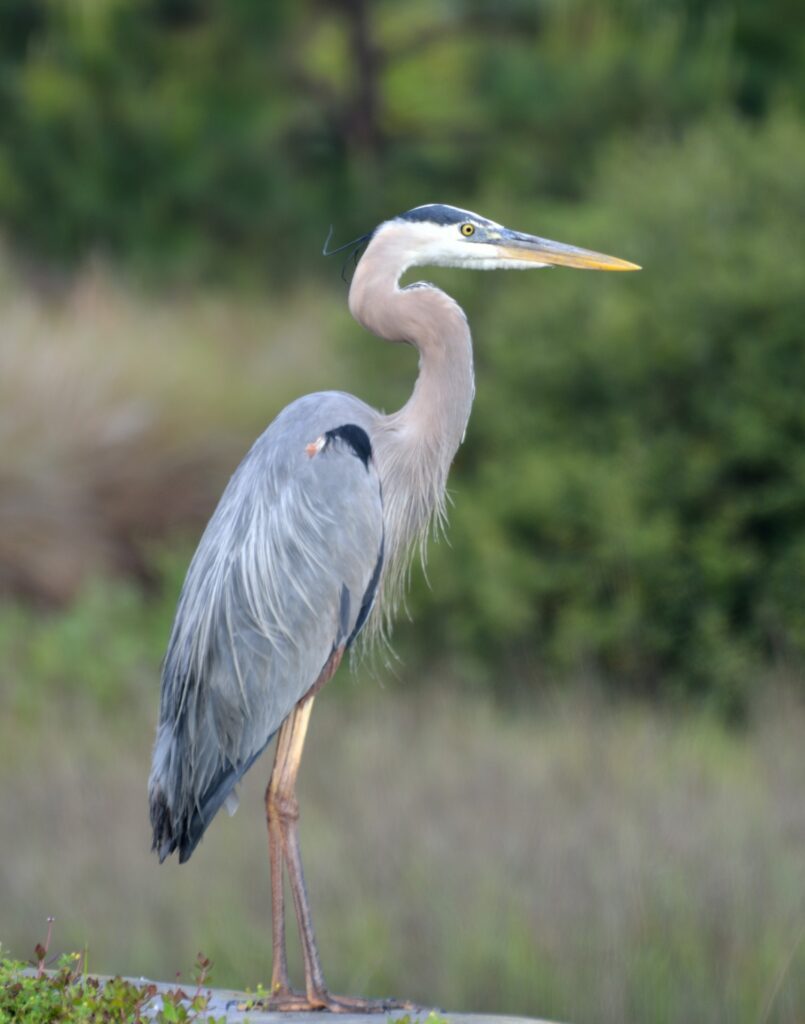
There are 64 species in the heron family and they can be found on every continent except Antarctica. Almost all species are waterbirds, with a lifespan of about 15 years in the wild.
The word heron is rather old and of uncertain origin. It appeared in English language c. 1300, originating from the Latin aerius meaning aerial, or from Old French hairon, eron (12 century), earlier hairo (11 century), from Frankish haigiro or from Proto-Germanic hraigran.
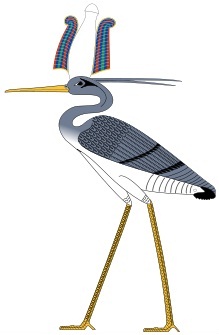
ancient Egypt, in the likeness
of a heron
The heron is a revered creature in many cultures, symbolic of wisdom, purity, communication and good judgement.
Here are some references for this article:


